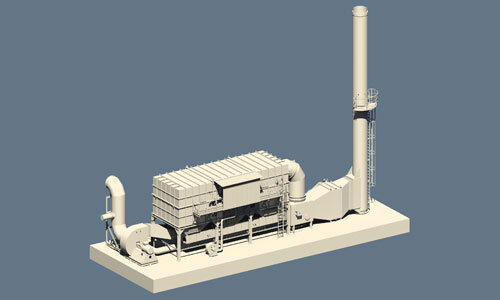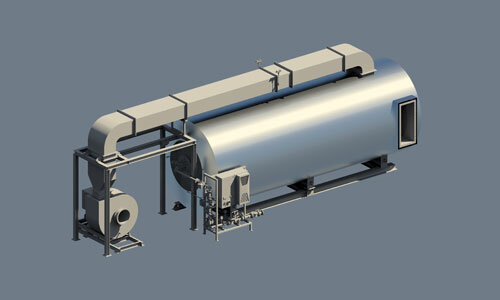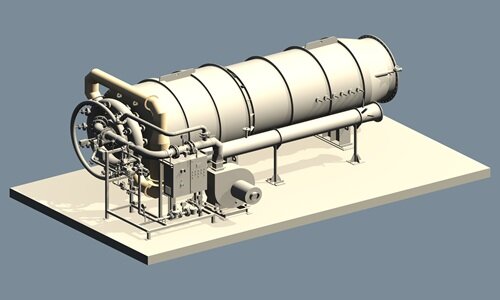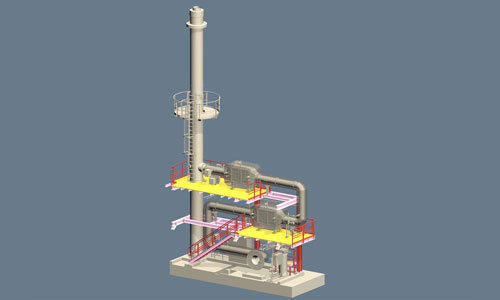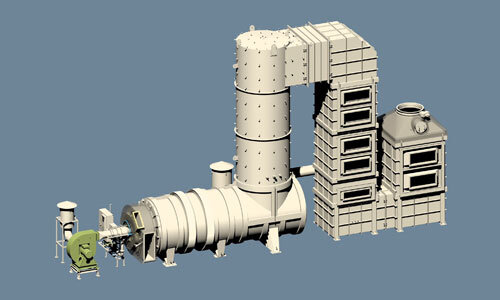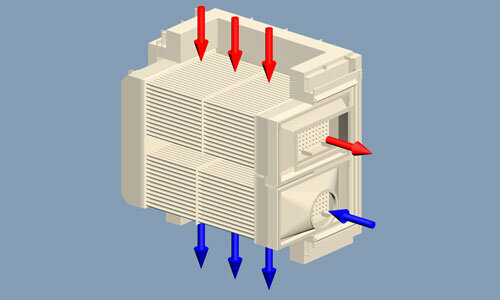Catalytic post-combustion system
Catalytic post-combustion system
Due to the use of catalysts, the oxidation of pollutants can take place at lower temperatures and is therefore particularly energy-saving. The presence of so-called catalyst poisons such as sulphur, heavy metals or halogens can be a problem for this plant technology. These would severely limit the service lifetime of a catalytic converter. Contact us whether your exhaust air is suitable for the use of a catalytic converter.


